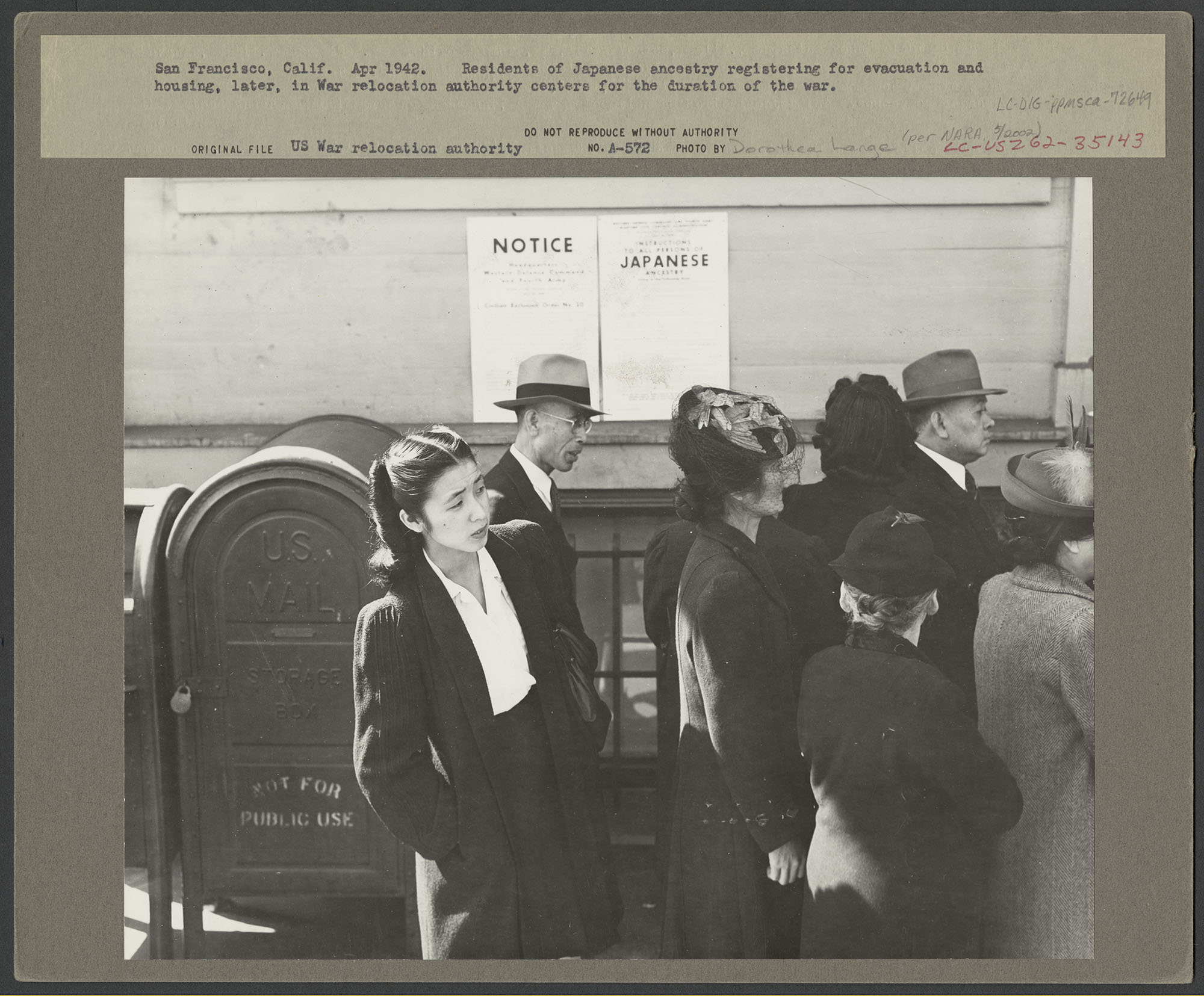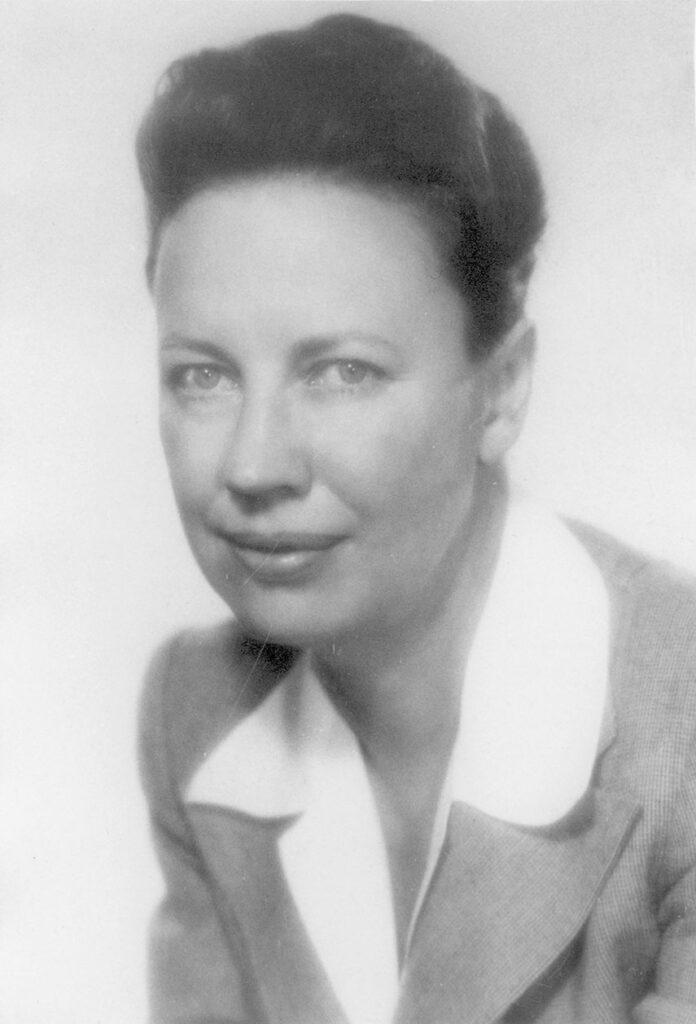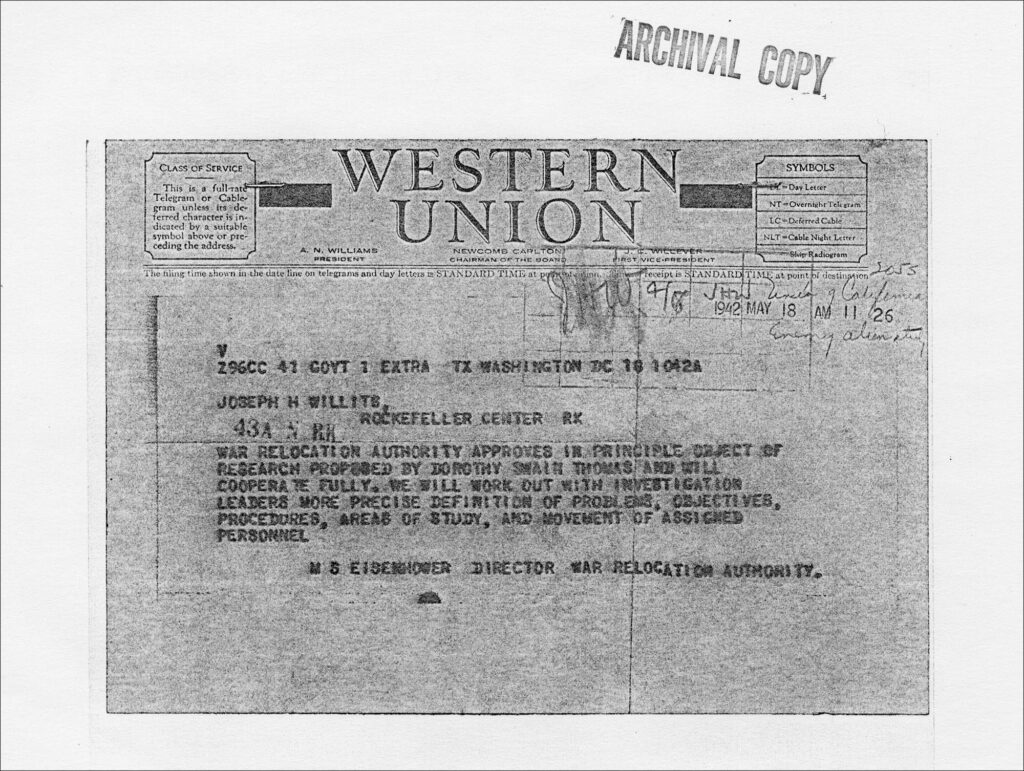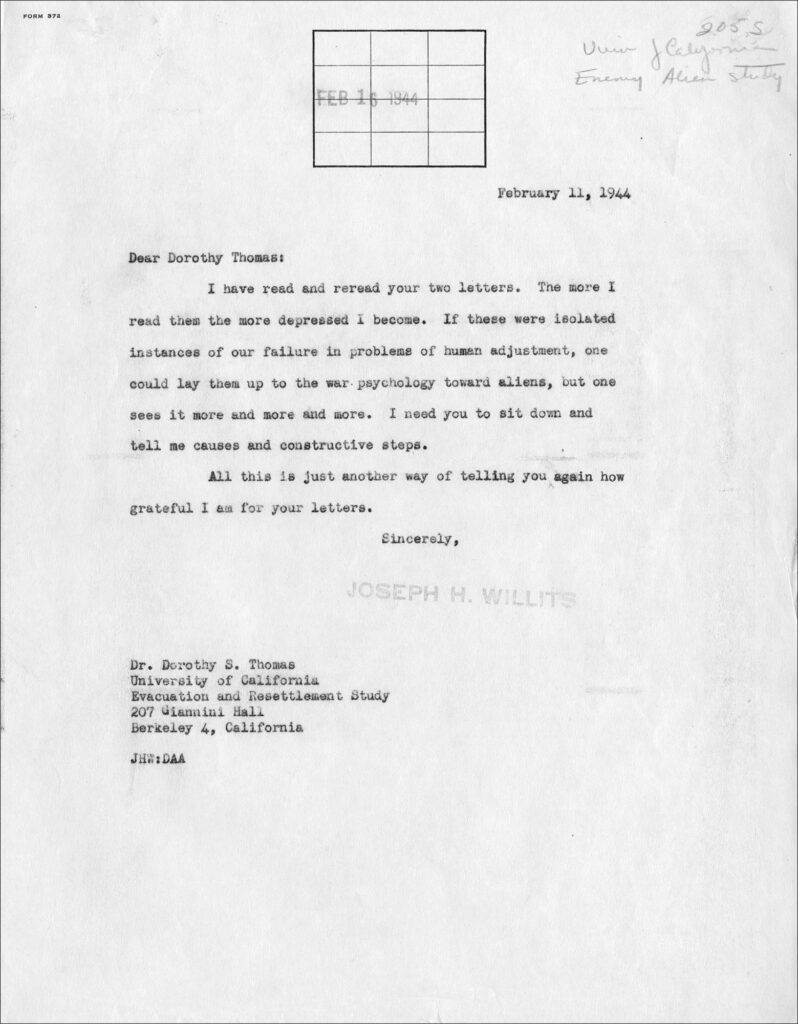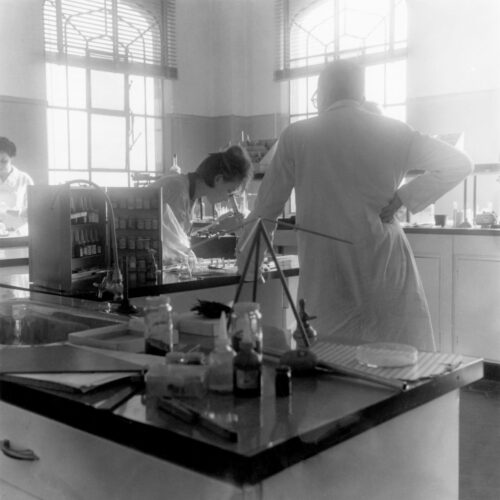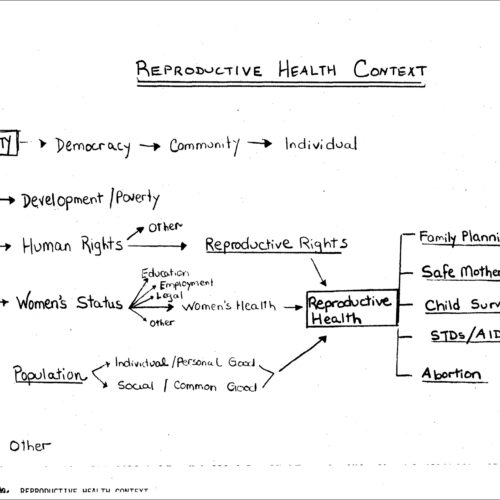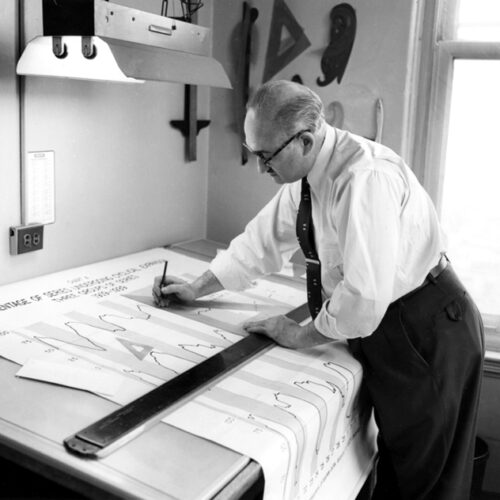The Japanese bombing of Pearl Harbor on December 7, 1941 shocked the American public and spurred American entry into World War II. On February 19, 1942, President Franklin D. Roosevelt issued Executive Order 9066, authorizing the Secretary of War to designate military zones and evacuate people deemed a threat to national security. The Order was used to detain approximately 110,000 people of Japanese ancestry living on the West Coast. Japanese immigrants (Issei) and their American-born children (Nisei) were evicted from their homes and moved to temporary “assembly centers” on the West Coast. They were then transferred to “relocation centers” administered by the War Relocation Authority (WRA) in Arizona, Arkansas, California, Colorado, Idaho, and Utah.
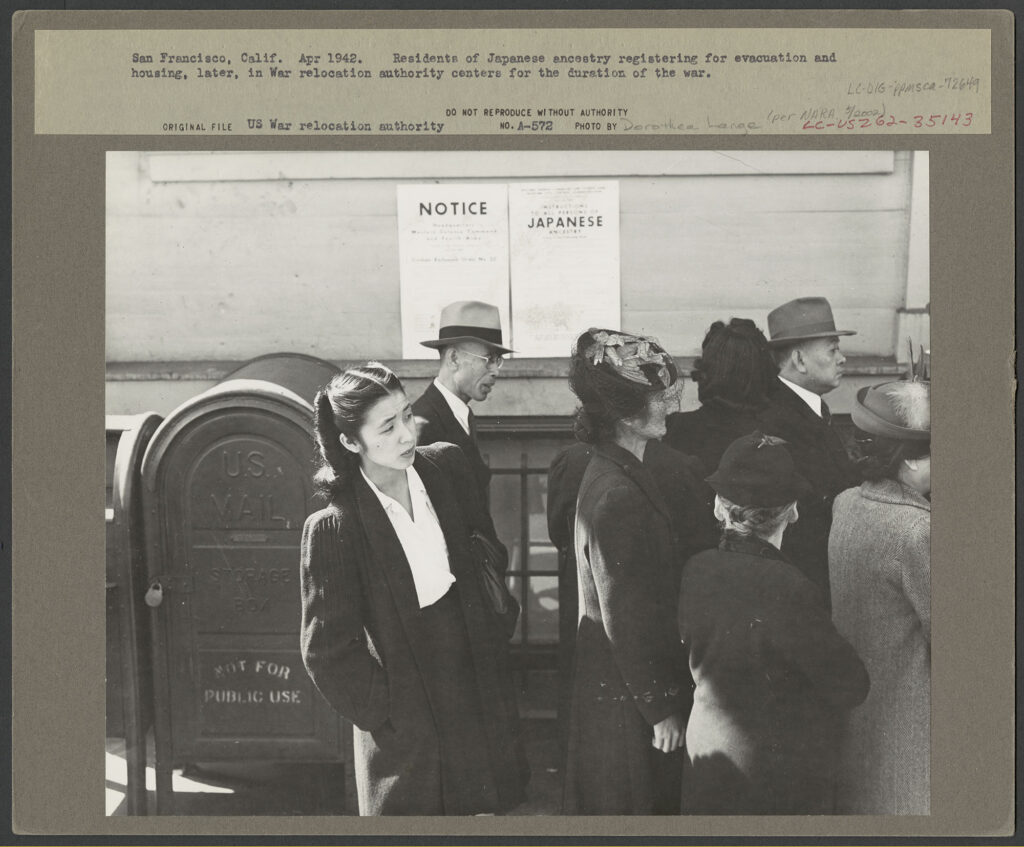
In March 1942, University of California, Berkeley Sociology Professor Dorothy Swaine Thomas wrote a letter to Rockefeller Foundation Social Sciences Director Joseph H. Willits, requesting that the Foundation create a program for displaced Japanese American scholars modeled on its European Refugee Scholars program:
We are deeply concerned about this situation, and feel that it calls for immediate constructive efforts . . . to avoid what would otherwise inevitably result in social waste of great magnitude. Since the Rockefeller Foundation has carried through a notable program for the salvage of displaced European scholars, we wonder whether both the precedent and the administrative mechanism are not already established . . .. We believe that someone from the Foundation should be put in charge of a program for placing selected students and faculty members in universities and professional colleges of various sorts, east of the Mississippi . . .
Dorothy Swaine Thomas to Joseph H. Willits, March 11, 1942Dorothy Swaine Thomas to Joseph H. Willits, March 11, 1942, Rockefeller Archive Center (RAC), RG 1.2, Series 205S, Box 11, Folder 81.
The Emergency Committee in Aid of Displaced Foreign Scholars, which placed refugee German scholars in American institutions, was divided over whether to now aid Japanese American scholars. The group ultimately declined to get involved. Willits remained sympathetic, however, wondering “whether there is anything that the Foundation could, by ingenuity, do that would make for a more humane handling, that would conserve personal and international values.”Joseph H. Willits to RF Officers, March 18, 1942, RAC, RG 1.2, Series 205S, Box 11, Folder 81.
In April, Thomas submitted a new proposal for an interdisciplinary study of the incarceration of Japanese Americans. Willits supported the proposal on several grounds. He observed that scholars would one day see this as an important historical event, and it merited documentation for future study. He predicted that it would advance understanding of forced migrations and foster postwar goodwill with the Japanese (though those imprisoned were not Japanese, but American citizens). Willits also believed it would reflect kindly on the United States and the Foundation:
That this country, through the RF, was sensitive enough to the human rights of those we officially hate, to arrange for a careful study of the effects of this forced migration on these Japanese, will stand out in contrast to the concentration camp techniques of other countries.
Joseph H. Willits, May 5, 1942Joseph H. Willits to RF Officers, May 5, 1942, RAC, RG 1.2, Series 205S, Box 11, Folder 81.
With Willits’ encouragement, Rockefeller Foundation Trustees approved a $7,500 grant to begin the study. The Foundation ultimately contributed $38,750 between 1942 and 1948, and Thomas received additional funding from the Giannini and Columbia Foundations and the University of California.
“The Japanese American Evacuation and Resettlement Study”
On May 18, 1942, Thomas secured the cooperation of WRA Director Milton Eisenhower, and the Japanese American Evacuation and Resettlement Study (JERS) was underway.
Thomas employed six Nisei undergraduate and graduate students, themselves incarcerated, to serve as participant observers in the camps. She also hired five white graduate students, three of whom also recorded observations. Collectively, they documented the incarceration experience from the temporary assembly centers, to the prison camps, to resettlement in Chicago. They kept detailed diaries, filed field reports, collected documents, and recorded life histories of the incarcerated.
Thomas remained in contact with Willits throughout the study, regularly sending him both formal progress reports and informal assessments of events unfolding in the prison camps.
In a January 1943 letter, she wrote:
Tensions have been developing in the camps for months, and now the almost inevitable outbreaks are occurring. […] It is difficult to know what the next stage of this unhappy process will be, but whatever it is, our intelligent and courageous observers will get the record.
Dorothy Swaine Thomas to Joseph H. Willits, January 4, 1943.“University of California – Enemy Alien Study – (Japanese-Americans, Dorothy S. Thomas),” 1942. Rockefeller Foundation records, Projects (Grants), Record Group 1, Subgroup 1.1, Unites States, Series 200, United States – General (No Program), Subseries 200.GEN, Rockefeller Archive Center.
Willits was disheartened by the turmoil conveyed in her letters:
The more I read them the more depressed I become. If these were isolated instances of our failure in problems of human adjustment, one could lay them up to the war psychology toward aliens, but one sees it more and more and more.
Joseph H. Willits to Dorothy Swaine Thomas, February 11, 1944“University of California – Enemy Alien Study – (Japanese-Americans, Dorothy S. Thomas),” 1942. Rockefeller Foundation records, Projects (Grants), Record Group 1, Subgroup 1.1, Unites States, Series 200, United States – General (No Program), Subseries 200.GEN, Rockefeller Archive Center.
Publication, Controversy, and Reappraisal
Dorothy Swaine Thomas published the JERS study in two volumes. The Spoilage (1946), with co-author Richard S. Nishimoto, documented the experiences of Japanese Americans deemed “disloyal” and segregated in the Tule Lake prison camp. The Salvage (1952), with co-authors Charles Kikuchi and James Minoru Sakoda, followed the lives of “loyal” Japanese Americans who were cleared to leave the camps and resettle in the Midwest.
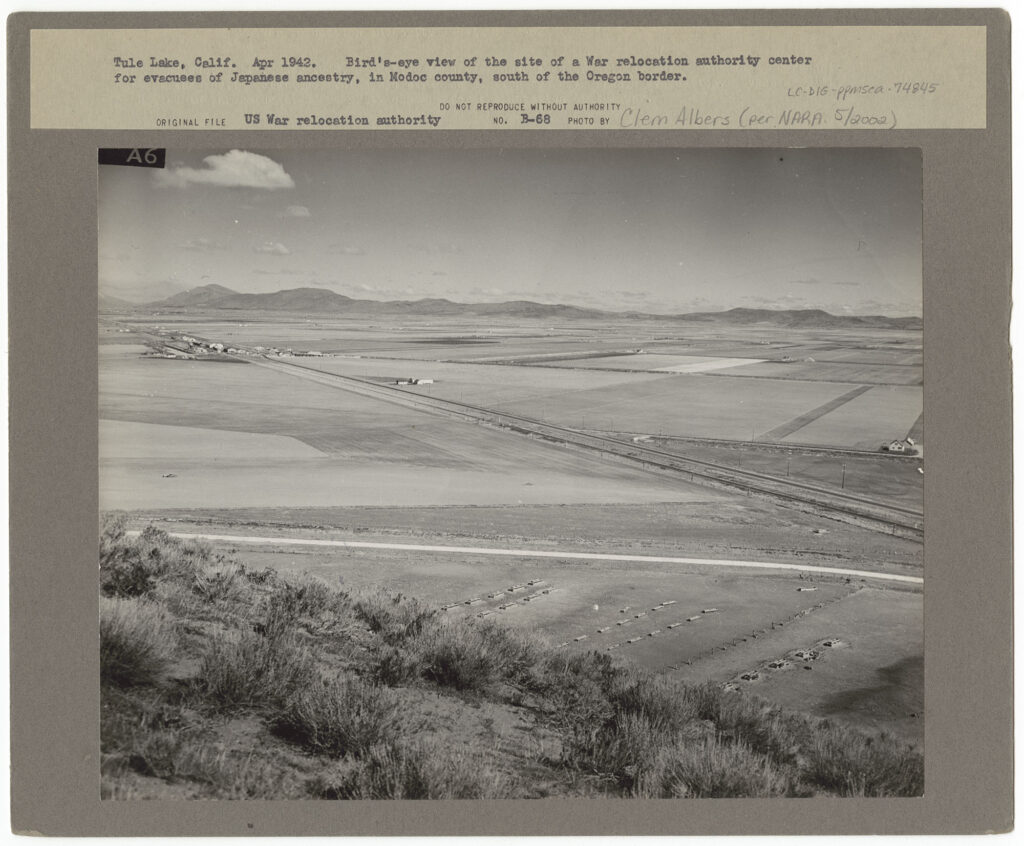
The study drew both praise and critiques. On the one hand, the documentary evidence collected supported retribution cases later brought forth by those who had been incarcerated. For instance, three Nisei women filed suit in 1948 after being denied United States passports because they had renounced their citizenship while incarcerated at Tule Lake. They claimed that the renunciation “was forced upon them,” and a United States District Court agreed. In 1949, Judge William Denman of the Ninth Circuit Court of Appeals upheld the decision, citing The Spoilage as evidence. Willits proudly circulated the decision among RF officers, noting “It is not often that we get clear-cut evidence of the part played by RF funds in contributing to the solution of problems of human relations.”Joseph H. Willits, “Possible Item for Trustees’ Bulletin,” November 7, 1949, RAC, RG 1.2, Series 205S, Box 12, Folder 83.
Thomas’s study also faced intense criticism. Some JERS staff members complained that it lacked sufficient theoretical framework. Others raised ethical questions, criticizing the study for making little effort to remedy the plight of the incarcerated Japanese Americans.Yuji Ichioka, ed., Views from Within: The Japanese American Evacuation and Resettlement Study (Los Angeles: Asian American Studies Center, UCLA, 1989), 10 and 22-23.
Despite the validity of these criticisms, nevertheless the JERS study generated an invaluable archival record. In this sense, Willits proved prescient in his arguments made to fellow officers:
Twenty-five years from now historians galore will be trying to write the history of this incident. By then – if nothing is done now, – most of the real material, – which is ephemeral, – will be lost and the histories will be written solely on the documentary material and be consequently deficient.
Joseph H. Willits to Rockefeller Foundation Officers, May 5, 1942Joseph H. Willits to RF Officers, May 5, 1942, RAC, RG 1.2, Series 205S, Box 11, Folder 81.
Research This Topic in the Archives
Explore this topic by viewing records, many of which are digitized, through our online archival discovery system.
- “Emergency Committee in Aid of Displaced Foreign Scholars,” 1940 May – 1942 December. Rockefeller Foundation records, Projects (Grants), Record Group 1, Subgroup 1.1, United States, Series 200, United States – General (No Program), Subseries 200.GEN, Rockefeller Archive Center.
- “University of California – Enemy Alien Study (Japanese-Americans, Dorothy S. Thomas),” 1942. Rockefeller Foundation records, Projects (Grants), Record Group 1, Subgroup 1.1, United States, Series 200, United States – General (No Program), Subseries 200.GEN, Rockefeller Archive Center.
The Rockefeller Archive Center originally published this content in 2013 as part of an online exhibit called 100 Years: The Rockefeller Foundation (later retitled The Rockefeller Foundation. A Digital History). It was migrated to its current home on RE:source in 2022.
